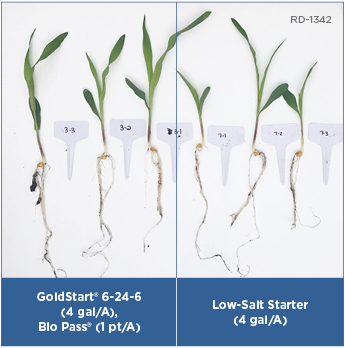Ohio: Corn Damage More Localized
After the wind storm from Hurricane Ike, Ohio growers are finding their corn in one of two states: either standing relatively well or taking a beating, and it pretty much depends on the stage of maturity as to how difficult the crop will be to harvest.
Wind damage appears most severe in drought-stressed corn that had died prematurely, resulting in weak stalks, and late-planted corn that had shallow, limited root systems.
"It’s not uncommon to see considerable variability in stalk lodging within cornfields, with those areas of fields where corn ponding occurred in June followed by drought stress in July and August exhibiting the worst damage," says Peter Thomison, an Ohio State University (OSU) Extension agronomist. "It’s also remarkable how well corn is standing in many fields despite the high winds."
Thomison says that while evidence of wind damage is widespread, severe damage — which may result in significant yield losses — seems more localized rather than statewide.
"Growers are likely to see three scenarios with wind-damaged corn: the tops blown off above the ear (there is minimal damage associated with this condition), breakage below the ear, and plants broken off at the base," says Thomison. "With the last two situations, harvesting the corn for grain will be difficult to near impossible if the grain is still very wet and corn is nearly flat on the ground."
Thomison adds that harvest losses could range from a modest 1 percent to 5 percent per field, up to as high as 40 percent to 50 percent, depending on how badly the crop lodged and what the weather does over the next few weeks.
Rains could invite disease problems, says Pierce Paul, an OSU Extension plant pathologist. "Anything that causes the ears to be in contact with the ground could potentially lead to ear mold problems," he says. "Corn at the stage of development before black layer and lying on the ground is most vulnerable to infection because the husk is not fully mature."
Paul says that a number of growers were expressing concerns about the development of Aspergillus and the accumulation of aflatoxins, problems commonly associated with drought-stressed crops.
"Downed corn will certainly be exposed to these conditions, especially high moisture if it rains, and since Aspergillus is a soil-borne fungus infection could easily occur," says Paul. But, he adds, growers should also pay attention to such ear mold diseases as Fusarium and Diplodia, which could develop if damaged ears come in contact with moist soils. Any condition that increases moisture in the grain, puts maturing grain in contact with the soil, restricts drying, and makes harvest operation difficult could promote fungal growth and toxin contamination.
"What we don’t want right now is rain. That will just aggravate the situation," says Paul. "If growers do face that situation, they should look for any discoloration or moldy growth on the ears they may scout for in their fields. They should have suspect grain analyzed for mycotoxins before feeding to livestock."
The most important thing right now is for growers to earmark those severely wind-damaged fields for priority harvest if grain moisture is appropriate.
"Growers need to prioritize fields that have severely lodged corn for early harvest," says Thomison. "They need to get those ears off the ground to limit further weathering losses."
(Source: The Ohio State University)






